The Nature of Bonds in the Atomic Structure of Substances
Utelbayeva AB1, Zhanabay N1, Suleimenov EN2* , Utelbayev BT3
1M. Auezov South Kazakhstan State University (Shymkent, Kazakhstan)
2Kazakh-British Technical University, Almaty, Kazakhstan
3A.Bekturov Institute of Chemical Sciences, Almaty, Kazakhstan
*Corresponding Author: Suleimenov EN, Kazakh-British Technical University, Almaty, Kazakhstan
Received: 09 May 2022; Accepted: 16 May 2022; Published: 01 June 2022
Article Information
Citation: Utelbayeva AB, Zhanabay N, Suleimenov EN, Utelbayev BT. The Nature of Bonds in the Atomic Structure of Substances. International Journal of Plant, Animal and Environmental Sciences 12 (2022): 059-073.
View / Download Pdf Share at FacebookAbstract
It follows from the atomic structure of substances that they include the same electrons, protons and neutrons, which individualize atoms in terms of quantity and structural-energy interaction. These atoms in the form of chemical elements form chemical bonds between themselves or other atoms and form the "chemical individuals" of specific compounds. And during the course of chemical, biochemical, electrochemical processes, the original chemical bonds are broken in the reagents and new chemical bonds are formed. The purpose of this work was to study and elucidate the nature of the chemical bond in the atomic structure of substances in order to establish the fundamental laws of natural science. It is assumed that in the course of evolution of the Universe during collisions of oppositely charged electrical matters they break up into subelementary dipoles and magnetic bipoles. As a result of this process the formed fluctuating subelementary matter increases the entropy of the system, which causes non-equilibrium processes. Using Prigogine's terminology, fluctuating systems are a source of non-equilibrium, which generates "order out of chaos." It is believed that the formation of "electromagnetic particles" comes from the annihilation products of positron - electron, proton - antiproton and other pairs and is a creation of Nature. These "electromagnetic particles" carry out connections in the atomic structure of substances. The formation of "subelementary dipoles" in the process of annihilations allows us to judge that the electron - positron representing an elementary charge also consists of dipole structures, where the poles interact with each other through magnetic bipoles. The electrical and magnetic components of "electromagnetic particles" fluctuations create a picture of a standing wave taken for particle-wave duality of the particle. Fluctuating "electromagnetic particles" combining therm
Keywords
Chemical bond; Atom; Electron; Positron; Dipole; Magnetic bipole; Electromagnetic particle
Chemical bond articles; Atom articles; Electron articles; Positron articles; Dipole articles; Magnetic bipole articles; Electromagnetic particle articles
Article Details
1. Introduction
For a correct assessment of the ongoing changes in nature it is necessary to consider these processes in the form in which they are. We observe the world only through the prism of a combination of experimental results and new theoretical concepts. With the expansion of our knowledge we became convinced that it follows from the atomic structure of substances, that they include the same electrons, protons and neutrons, which individualize atoms in quantity and structural-energy interaction [1-12].
These atoms in the form of chemical elements between themselves or other elements form chemical bonds, the strength of which is characterized by the binding energy, and a certain number of chemical elements form specific "chemical individuals" of macroscopic compounds [13]. According to Feynman's suggestion [14], polarized electrons are responsible for the origin of a variety of material formations, and in the absence of this property, all atoms in the world would have very similar properties, would not be attracted to other atoms, forming chemical bonds. It is noted in [15] that the simplest carrier of chemical properties is an atom (including an ionized one), consisting of a nucleus and electrons moving around it, and the nature of the bond is explained in the formation of new electronic (molecular) orbitals.
It is well known that electrically charged objects create a corresponding field, and, in turn, moving charged particles generate a magnetic field [16-19]. These concepts are the foundation of classical electrodynamics and are based on the fact that the interaction of electric charges is carried out through electromagnetic fields. The essence of the interaction and the physical properties of these fields are described by Maxwell's electrodynamic equations [20]. At the same time, the magnetic field is not only created by moving charges that create an electric current, but also acts on them called the Ampère force [21-23].
Real chemical, biochemical, electrochemical and electrical transformations show that when these processes occur, heat, light and "magnetic phenomena" appear, which are forms of energy transfer, which under appropriate conditions, again create an electric current. These provisions are formulated in the form of M. Faraday's thesis that regardless of the thermal, light, chemical, physiological, magnetic or mechanical energy source, they can all manifest themselves in the form of the same electricity [24].
That is, electricity is directly related to the forms of energy transfer and it should be noted that “energy” is a conceptual expression introduced by researchers to describe the state of moving matter, which is estimated by the product of mass by a value characterizing its movement. And according to the generally accepted definitions of energy, this concept is formulated as: “energy is a scalar physical quantity, which is a single measure of various forms of motion and interaction of matter, a measure of the transition of the motion of matter from one form to another” [25].
Hence it follows that any energy manifestations represent moving matter, and energy transfers in the form of heat, light, magnetism and other forms are a set of moving elementary matters - "theplotrons" [26], photons, magnetic bipoles and other particles, respectively.Thus, in the course of physical and chemical transformations of substances, energy manifestations mean the presence of “some elemental matter” in the atomic structure, which determines their structural and energy interaction.
Therefore, a scientifically based approach to identifying the nature of the chemical bond between the constituent elements of the system in the future will open up the possibility of purposeful synthesis of substances with desired properties, accumulation and transfer of energy between material objects and rational use of energy resources. And the purpose of this article is to study and elucidate the nature of the chemical bond of the atomic structure of substances in order to establish the fundamental laws of natural science.
2. Discussion
According to modern concepts, a substance consists of interconnected atoms - electrically neutral particles, consisting of a positively charged nucleus and negatively charged electrons [4-12]. In the relative rest of substances, its state is described by internal energy, which, when the state of the system changes, manifests itself in the form of energy transfers - in the form of work, heat, light, electricity, magnetism, etc. In these processes, the nuclear-electronic system plays an important role, however, so far since then; all the details of the structure of atoms and their nature of bonding in the atomic-molecular structure of substances remain unclear. In relation to modern theories about the structure of the atom, we can say that they are too cluttered with complex calculations and assumptions, which, in our opinion, need significant refinement. In the theory of "Valence bonds", the formation of a chemical bond is explained by the interaction of external (valence) electrons held by positively charged nuclei. And in the molecular orbital method (MMO), the formation of a chemical bond is considered by a linear combination of atomic orbitals (AO), which form molecular orbitals (MO), where electrons in molecular orbitals are located in accordance with the Pauli principle and Hund's rule. In [3], the “G-theory of chemical bonding” is proposed, based on the energy gain in accordance with the structural and energy arrangement of the nuclear-electronic system. Thus, the formation of a chemical bond is usually attributed to the socialization of valence electrons of atoms with a decrease in the energy of the system, despite the repulsion of like charges, referring to the property of electron spins.
It is known from the course of physics that an “electrostatic field” arises around any stationary charge, which does not change its properties over time. This "field" will act on any other electric charge, which will also act on the first charge. According to the experimental data of M. Faraday [24], it is assumed that the charges are surrounded by an "electric field", through which the interaction is carried out. That is, Faraday's works and Maxwell's theoretical reasoning [17] indicated that charges interact with each other through their fields. However, the nature of the lines of force of the electric field, their density is still not disclosed. In addition, the potential nature of the energy of the charges of the nucleus and electrons determine the energy interactions between them, forming atoms, which, when combined in the form of chemical elements, form a given substance. Consequently, the forces connecting atoms in the form of chemical elements are equal to the binding energy between them, and by determining this value, one can estimate the mass of “some matter”. In turn, the release (absorption) of heat, light and other forms of energy carriers in chemical, biochemical processes, where there is a break in the original and the formation of new bonds between chemical elements, makes it possible to unequivocally judge that "some matter" that carries out the connection is photons, "theplotrons" and other subelementary matters.
The experimentally determined binding energies and ionization potentials of atoms given in the reference literature made it possible to calculate the mass of these elementary energy carriers based on the classical equations ε = mc2 and ε = hv [26-27]. In [28], the fundamental role of photons in the formation of atoms and in the occurrence of gravitational and magnetic masses of the electron and positron was noted.
In our opinion, during the evolution of the Universe, some of the existing elementary particles and antiparticles (electron - positron, proton - antiproton, etc.) were annihilated with each other and formed subelementary dipoly - photons, " theplotrons ", which possibly represent the "ethereal medium" until now still a controversial issue. This environment is constantly replenished with photons and "theplotrons" of solar, cosmic rays, lightning discharges and other natural processes. For example, a lightning discharge releases 109-1010 joules of energy, which is spent on creating thunder, heating the air, flashing light and other electromagnetic waves. For example, as a result of annihilations of elementary particles of an electron and a positron at their maximum approximation to the Planck length (1.60•10-35m), the calculated value of the force according to the Coulomb formula is:
F = 1/(4πε0) . | q1| . | q2| /r2
F ≈ 9.109.1, 6.10-19.1, 6.10-19 / (1, 60•10-35)2 = 9.1041N
The enormous value of the force 9.1041N causes the destruction of the integrity and fragmentation of the charge masses into "subelementary dipoles", representing "heattrons", photons, magnetic bipoles and other subelementary particles. For persuasiveness, we assume that the sum of the masses of an electron and a positron is 2 . 9.31 . 10-31 = 18.62 . 10-31kg and the number of generated “theplotrons” and photons with a mass of 9.3.10-36 kg is 18.62.10-36 kg. 31: 9.3.10-36 ≈ 2.105 particles, although the literature notes the formation of two photons.
To determine the mass of "subelementary matter" with magnetic properties, we use the unit of elementary magnetic moment "Bohr magneton" (µV) - equal to the intrinsic (spin) magnetic moment of an electron (9.2732 ± 0.0006).10-24 J/T. This value means that one Tesla corresponds to approximately 9.27.10-24J of energy action per unit of magnetic induction. It is well known that any energy action is carried out by means of moving matter, which has a certain mass. And to determine the mass of matter exerting 9.27.10-24 J of energy action per unit of magnetic induction, we will use the generally accepted conversion units of physical quantities. Based on the fact that the value of 1a.u.m. equal to 1.66.10-27kg corresponds to 1.49.10-10J, then for 9.27.10-24J the mass equivalence of 1.03.10-40kg follows. Therefore, per unit of magnetic induction (T) corresponds to a mass of 1.03.10-40kg, and taking into account the fact that 1 T is equal to 1N / (A.m), and 1A is equal to 2.10-7 N/m, then the mass of magnetic matter creating the effect of "Bohr magneton" is equal to 2.06.10-47 kg.
In all cases, charged particles are produced only in pairs with charges of the same modulus and opposite in sign; charged particles also disappear only in pairs, turning into neutral dipole structures. And in all these cases, the algebraic sum of charges for particles and antiparticles remains the same. According to the scientific literature, the annihilation of an electron and a positron produces two photons [29]. According to the law of conservation of charges and matter, the charges of the electron and positron are redistributed along the poles of the dipoles. This phenomenon, the formation of subelementary dipoles in the form of photons and "theplotrons", means that the initial charges have the corresponding dipole structures. Therefore, the electron and positron taken as an elementary charge also consists of subelementary pole formations in the form of a “tripole”, which are the constituent parts of the electron and positron (Figure 1):
The polar parts of the "tripoles" interact through magnetic bipoles. The non-equilibrium distribution of electrical matters in the "tripoli" causes their fluctuation, where the system tends to a state of equilibrium. In this regard, "tripoles" are combined into relatively large aggregates containing large numbers of "tripoles" according to the conditional scheme proposed in Figures 2 and 3 to the corresponding mass of an electron and a positron:
The spatial arrangement of five "tripoles" (along the x and y axes - four "tripoles" that close to the "tripole" on the z axis) forms a subelementary cell of the elementary charge, where for an electron in the outer part there will be only negative poles, and for a positron positive ( Figure 3):
The poles of dipoles and "tripoles" are electrical matters, and their potential nature of interaction refers to energy manifestations, i.e. attraction-repulsion between the poles should be carried out by means of “magnetic bipoles”. These "magnetic bipoles" are the creation of Nature and the energy manifestation of electrical matters, i.e., their property. The conditional schematic interaction of the poles by means of magnetic bipoles is as follows (Figure 4):
The proposed conditional combination of "electric" and "magnetic" components is a creation of Nature and represents the elementary link of the electromagnetic field in the form of an "electromagnetic particle" (Fig. 4). In fact, the electromagnetic particle is not new, and as a creation of Nature has existed since the formation of the electromagnetic field, however, it was not taken into account as an elementary material substance that carries out the energy interaction of electrical matters. Those electric charge is a physical quantity that determines the intensity of electromagnetic interactions. Thus, the constituent bases of electric charges are combined dipoles in the form of "tripoles" connected by magnetic bipoles representing charged "electromagnetic particles". Various combinations of "electromagnetic particles" in the course of evolution is the raw material for the formation of atoms for the formation of "chemical individuals" of substances. Numerous works are devoted to the study of electromagnetic interaction and terrestrial magnetism, in which achievements in the field of physical and mathematical description and application are sufficiently stated [16-24, 30-32].
As you know, substances are electrically neutral, since the electric charges in the atomic structure are the same in modulus and opposite in sign. The interaction of these charges is carried out by means of magnetic bipoles, which, in electrically neutral positions, magnetic bipoles are located in the directions of the corresponding charges. Violation of the electrical neutrality of the system by the movement of charges leads to an energy manifestation - the vortex movement of magnetic bipoles representing subelementary matter. At the same time, matter never turns into energy, since energy characterizes precisely the state of moving or resting matter. In transformations of energy, only the form of the movement of material substances changes in the form of light, heat, electricity, magnetism and other manifestations. And in the above annihilation processes, the released internal energy in the form of subelementary dipoles and magnetic bipoles increases the entropy and creates non-equilibrium of the system with the environment. An irreversible process takes place to equalize the thermodynamic parameters: chaos in the environment increases and at the local level there is an “adiabatic compression” and the ordering of “electromagnetic particles” into bidipole or more complex combinations. Using Prigogine's terminology fluctuating systems are a source of nonequilibrium, which generates "order out of chaos" [33]. The formation of a bidipole configuration occurs by connecting two "electromagnetic particles" with opposite dipole moments (Figure 5):
The bidipole configuration of "electromagnetic particles" is the most - structurally - energetically favorable for balancing the electric potentials of the poles by their fluctuation. Due to the bi-dipole configuration of "electromagnetic particles", the valence electrons of atoms form a chemical bond being attracted to its opposite poles. In addition, this bidipole configuration reveals the physical meaning of the Pauli’s prohibition that no more than two electrons can be located in one energy cell. As a result of fluctuations in the charges of the polar parts of the dipoles, a vortex motion of the magnetic bipoles occurs and a standing wave pattern is created, which in the scientific literature is taken as the corpuscular-wave properties of elementary particles.
Since this "electromagnetic particle" is in dynamic equilibrium with photons, "heattrons" and magnetic bipoles of the environment and in order to avoid errors in the directions of their interaction, for clarity, we will depict them in the form of the following diagram (Figure 6):
In turn, the oscillation (fluctuation) of the poles of the dipoles relative to each other with a change in their shape creates a picture of a standing wave and the oscillation frequency is taken as the radiation frequency. As is known, in the scientific literature, the energy of photons is determined by the "radiation frequency" v- introduced by M. Planck [34]. That quantum of energy (ε) of electromagnetic radiation realized by photons is directly proportional to the frequency of electromagnetic radiation (v) described by the formula:
ε = hv or ε = ħω
where h =2πħ = 6.626.20-34 J.s - Planck's constant, ħ = h/2π - normalized Planck's constant, ω - cyclic radiation frequency.
In his calculations, Planck chose the simplest model of the radiating system (cavity walls) in the form of harmonic oscillators (electric dipoles) with all possible natural frequencies. An analysis of the above equations makes it easy to verify the relationship between the radiation frequency and the cyclic frequency from a mathematical point of view according to the formula:
ω = 2πv or v = ω /2π
The cyclic frequency (ω) by which the change in the amplitude of oscillations (current or voltage values) is determined depending on the time period on the graph is characterized by a sinusoid. The trajectory of a sinusoid in time, expressing only the value of the amplitude, led to confusion with non-existent wave processes. This led to an insoluble dilemma to the postulation of corpuscular-wave properties of elementary particles and the appearance of Heisenberg's uncertainties.
It is well known that a wave is a process, movement (a trajectory of the movement of matters) and to characterize the same material subject by corpuscular-wave properties requires a detailed consideration of the state of its constituent components. In this regard, the most appropriate solution to the dilemma is to accept the presence of an "electromagnetic particle" in the atomic - molecular structure of substances. In the structure of atoms, "electromagnetic particles" through the vortex motions of "magnetic bipoles" creates a spin effect of electrons, nuclei and determines the magnetic moment. Energy manifestations in the form of heat, light and others in chemical, biochemical, electrical and other processes are forms of energy transfer through the movement of "electromagnetic particles". The temperature value characterizing the degree of heating of the system is directly proportional to the frequency of fluctuations (frequency of oscillations of the amplitude of the standing wave) of "electromagnetic particles" previously called "theplotrons" by us according to the formula [35]:
T = 0.959.10-11.v,
where v is the frequency of fluctuations of "electromagnetic particles", s-1;
- 0.959.10-11 temperature constant, degree.s.
In reality, the "frequency of radiation" used in scientific literature is the "frequency of fluctuations" of elementary substances proportional to the temperature of the system, which determines their thermal equilibrium with the environment. It is the fluctuating motion of photons, which are also varieties of "electromagnetic particles", that brings clarity to the corpuscular (I. Newton) and wave (R. Hooke and H. Huygens) theories of the propagation of the sun's rays. In fact, the flow of fluctuating "electromagnetic particles" (a set of photons, "theplotrons" and other elementary particles) testifies to the validity of both views of scientists.
Thus, "electromagnetic particles" combining thermal, optical, magnetic and electrical properties directly forms combinations with nuclear - electronic structure and predetermines their nature of interaction. This manifests itself in the form of the entropy principle of structural and energy correspondence of the constituent elements of the system. For example, the flow of energy (the flow of photons, "theplotrons", magnetic bipoles, etc.) causes a change in the fluctuations of the "electromagnetic particles" of the local system, i.e., the system is unbalanced and non-equilibrium arises in comparison with its environment. And the interaction of the constituent elements between themselves and the environment under given conditions is determined by the state of "electromagnetic particles". In this case, the micro - macroscopic state of the system as a whole is characterized by a change in entropy according to the principle of structural - energy correspondence. Here we come to one of the main conclusions of I. Prigogine: at all levels, whether it be the level of macroscopic, or at the microscopic level of fluctuations, the source of order is non-equilibrium. Disequilibrium is what generates "order out of chaos" [36]. In other words, the non-equilibrium state tends to equilibrium and, according to the entropy principle of structural-energy correspondence, the formation of ordered structures occurs in the system until the next change in the equilibrium state. It is thanks to the openness of the system that the circulation of matter in nature is determined, obeying the universal law of conservation of mass and transformation of energy. For example, the released water vapor from a boiling kettle condenses, giving off heat (“theplotrons”) to the environment. Because of the non-equilibrium temperature, energy is transferred (“theplotrons”) to the environment. An irreversible process takes place and the chaotically moving molecules of water vapor, according to the principle of entropy of structural and energy correspondence, predetermined by the state of the “electromagnetic particle”, are ordered. Heating the condensed water again creates chaos and the process repeats. However, in [36] it is noted that in order for a system to be able not only to maintain, but also to create order out of chaos, it must certainly be open and have an influx of energy and matter from outside. According to the proposal of I. Prigogine, for open systems, the change in entropy dS over a time interval dt is considered as the sum of deS and diS:
dS = deS + diS
Here deS is the entropy flux due to the environment, and diS is the internal entropy production due to diffusion, heat conduction, chemical reactions and other irreversible processes. According to the authors, the specific feature of this equation is that the second term, the term diS, which describes the production of entropy, is always positive, which reflects irreversible changes occurring within the system. In order to understand the expansion of the increment of entropy into the sum of two terms, the authors argue with the involvement of the concept of energy. Denoting the energy increment over a short time interval dt through dE, they represent dE as the sum of the term deE, which describes the exchange of energy with the outside world, and the term diE, associated with the "internal production" of energy. We quote the author: “.. the law of conservation of energy states that energy is never “produced”, but only transferred from one place to another. Therefore, the total increment of energy dE is reduced to deE”. In our opinion, the authors neglected the change in the internal energy of this system, which directly affects the "entropy production". The added energy excites the movement of the constituent elements of the system, causing non-equilibrium, especially the fluctuation of the "electromagnetic particles" involved in the chemical bond. And the further behavior of the system at the bifurcation points is not random, but depends on the state of "electromagnetic particles" combining electrical, magnetic, thermal, optical and other properties that predetermine the change in the state of the system according to the principle of entropy - structural - energy correspondence. Knowledge of the complex characteristics of the change in the properties of "electromagnetic particles" in the future will open the possibility of regulating the direction of the process of the system and evaluating, according to the principle of entropy, the structural and energy correspondence of the constituent elements of the system. In our opinion, in the process of evolution of the Universe, according to the principle of entropy of structural and energy correspondence, hydrogen atoms or intermediate “fractals” were formed, shown in Figure 7.
In Figure 7, the proton, electron means the interaction of their polar parts with the poles of the "electromagnetic particle" through their magnetic bipoles. In turn, the approach and collision of two combined “electromagnetic particles” at a distance of ~ 2⋅10−18 m causes the interaction of protons with electrons with a sufficient force of 1.15.108 N according to the equation:
proton (p) + electron (e) + magnetic bipoles → Neutron(n).
As a result of the interaction of elementary particles and subelementary matters, neutrons are formed. At the same time, according to the interaction stoichiometry, the sum of the masses of a proton and an electron is 1.00783 a.m.u., and 0.00083 a.m.u. is not enough for the formation of a neutron. The missing mass is replenished by the components of the "electromagnetic particles" and forming a combination of the helium atom (Figure 8).
At the same time, the bond strength of the constituent elementary particles increases. A clear example of this is the high value of the electron ionization potential of a helium atom with two neutrons, compared to hydrogen atoms and molecules, where there are no neutrons. According to the experimental data, the potential ionization energy of the helium atom (twice the sum of the first and second ionization potentials) is 15215 kJ/mol, and for the combined two hydrogen atoms this value is 5246 kJ/mol [3]. And the energy gain of 9969 kJ/mol for the helium atom is a direct result of the presence of neutrons in the system. If we assume that Figure 1c represents a hydrogen molecule, then the H-H bond breaking energy is 420 kJ/mol, and the ionization potential of molecular hydrogen is 1481 kJ/mol and compared to these values 15215 kJ/mol unequivocally indicates the role of neutrons in bond strengthening educated system. Based on the foregoing, the formation of atoms and atomic nuclei occurs by the creator of Nature under appropriate conditions from protons, electrons through "electromagnetic particles", where stable "chemical individuals" are formed.
3. Conclusion
In the course of the evolution of the Universe during the annihilation of elementary particles and antiparticles (positrons - electrons, protons - antiprotons, etc.) "subelementary dipoles and magnetic bipoles" are formed. The dipole structure of the formed subelementary matters allows us to conclude about the dipole structure of the elementary charges of the electron and positron. Bonds in the atomic structure of substances is carried out by means of "electromagnetic particles" formed from "subelementary dipoles and magnetic bipoles". Electric and magnetic components of "electromagnetic particles", electron, proton and other elementary particles by fluctuation create a form of a standing wave and it taken as particle - wave dualism.
Fluctuating "electromagnetic particles" combining thermal, optic, magnetic and electrical properties determines the nature and direction of processes according to the entropy principle of the structural-energy correspondence of the system.
References
- Tatevskiy VM. Atoms in Molecules and Quantum Mechanical interpretation of the Concepts of the Classical theory of Chemical structure.// News MoscowUniversity.ser.2, Chemistry 40 (1999): 75.
- Sivukhin DV. General course of Physics. Thermodynamics and Molecular physics. DV Sivukhin M: Nauka 2 (1990): 591.
- Gankin V, Yu, Gankin Yu V, How a Chemical bond is formed and Chemical reactions Proceed. ITH. Boston (1998).
- Bader R. Atoms in Molecules. Quantum theory. M: Mir (2001): 532.
- Glesston S, Atom. Atomic nucleus. Atomic Energy, trans. from English M (1961).
- Vihman E. Quantum physics. – M: Nauka (1974): 416.
- Ya A. Ugay. General and Inorganic chemistry. Higher School, Moscow (1997): 527.
- Sirotkin OS, Sirotkin RO. Chemistry (Fundamentals of Unified Chemistry). KNORUS, Moscow (2014): 264.
- Pauling L. General Chemistry. Dover Publications, Inc., New York (1970): 992.
- Brown TL, Chemistry - the Central Science, 7th Ed., Prentice Hall, New Jersey (1997): 991.
- Chang R. Chemistry, 6th Ed., McGraw Hill, New York (1998): 992.
- Kelter P, Zumdahl S, Chemistry, 4th Ed., Houghton Miflin, Boston (1997): 453.
- Utelbayev BT, Suleimenov EN, Utelbayeva A, et al. Role of Atomic-Molecular Formation in Chemistry. eBook. Theory and Applications of Chemistry 1 (2019): 88.
- Feynman R, Layton R, Sands M. Electrodynamics. - Moscow: AST (2020): 352.
- Bondarev VP. Concepts of Modern natural Science: Textbook for University students. - M.: Alfa-M (2003): 464.
- The Magnetic field of the Electric current and the Magnetic induction.
- Aleshkevich VA. University course of General physics. Electromagnetism. M.: Fizmatlit (2014): 404.
- Bondarev BV. Course of General Physics. v. 2. Electromagnetism. Wave optics. The Quantum Physics. M: Higher School (2005): 438.
- Tyurin Yu.I, Chernov IP, Kryuchkov Yu.Yu. Physics part 2. Electricity and Magnetism: Textbook for Technical Universities. - Tomsk: Publishing House of Tomsk University (2003): 738.
- Electromagnetic field. Maxwell's theory - Ency.info. › 455-elektromagnetic-pole-teoriya of Maksvell.
- Detlaf AA, Yavorsky BM. Course of Physics: Textbook for Technical colleges. - 4th ed., Rev. - M: Higher. School (2002): 718.
- Trofimova TI. Physics course: Textbook. Allowance for universities. – Ed. 9th, revised and additional - M: Publishing Center Academy (2004): 560.
- Irodov IE. Electromagnetism. Basic Laws. - 5th edition - M: BINOM. Knowledge Laboratory (2006): 319.
- Faraday M. Experimental research on electricity. T1.-M: Publishing House of the Academy of Sciences of the USSR (1947): 548.
- https://ru.wikipedia.org/wiki/Energy
- Utelbayev BT, Suleimenov EN, Utelbayeva AB. On the Transfer of Heat between Material objects.// Science and World.International Scientific Journal 1 (2015): 39-44.
- Utelbayeva AB, Zhanabay N, Suleimenov EN, et al. Chemical bond and “Elementary substances” /Trends in the Development of Science and Education (2021): 47-56.
- Electronic resource. Vyshinsky V. The Role of Photons in the Formation of the Properties of Matter.
- Yavorsky BM. A Reference guide to Physics for Applicants to Universities and for Self-education. 4th ed., corrected. Yavorsky BM, Yu A Seleznev M. Nauka (1989): 576.
- Parkinson WD. Introduction to Geomagnetism M: Mir (1986): 527.
- Tyapkin KF. Physics of the Earth. Kyiv: Higher School (1998): 312.
- Aksenov VV. Electromagnetic Field of the Earth.-Novosibirsk:Sib.Departement Rus.Acad.Sie (2002).
- Prigozhin I, Stengers I. Order out of Chaos: A new Dialogue between Man and Nature: Per. from English/gen. ed. Arshinov VI, Yu L Klimontovich, Yu V Sachkov M. Progress (1986): 432.
- Planck's formula Physics.spbstu.ru›userfiles/ files/atom1_3.pdf
- Utelbayev BT, Suleimenov EN, Utelbayeva. Temperature and Elementary Carriers of Heat, eBook. Theory and Applications of Physical Science 1 (2019): 141.
- Nikolis G, Prigozhin I. Self-organization in Non-equilibrium Systems from Dissipative Structures and Ordering through Fluctuations. Trans. from English-M, Mir (1979): 512.



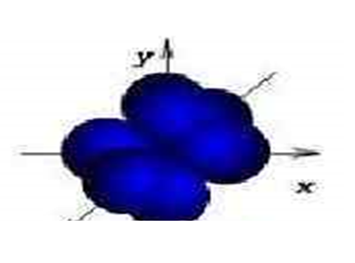
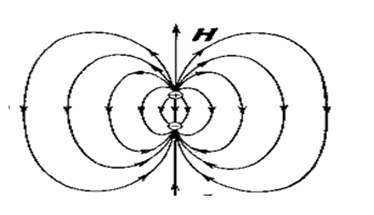
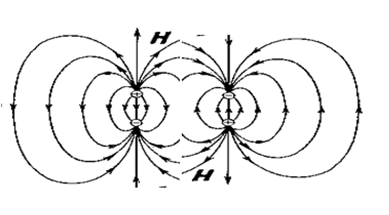
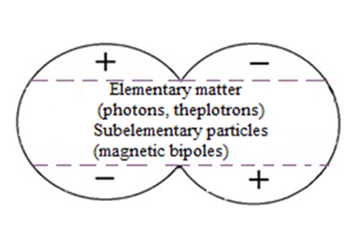

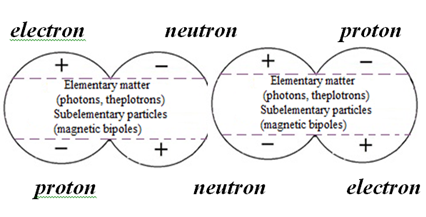

 Impact Factor: * 4.1
Impact Factor: * 4.1 Acceptance Rate: 75.32%
Acceptance Rate: 75.32%  Time to first decision: 10.4 days
Time to first decision: 10.4 days  Time from article received to acceptance: 2-3 weeks
Time from article received to acceptance: 2-3 weeks 